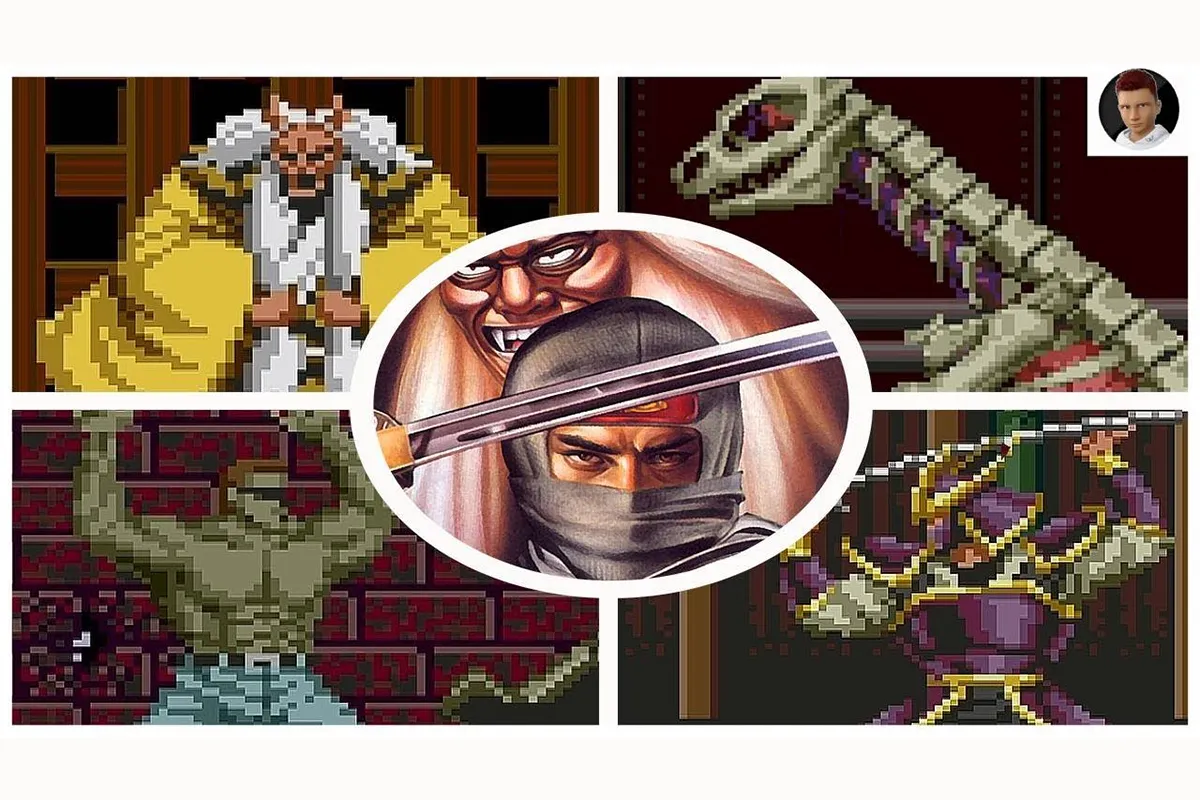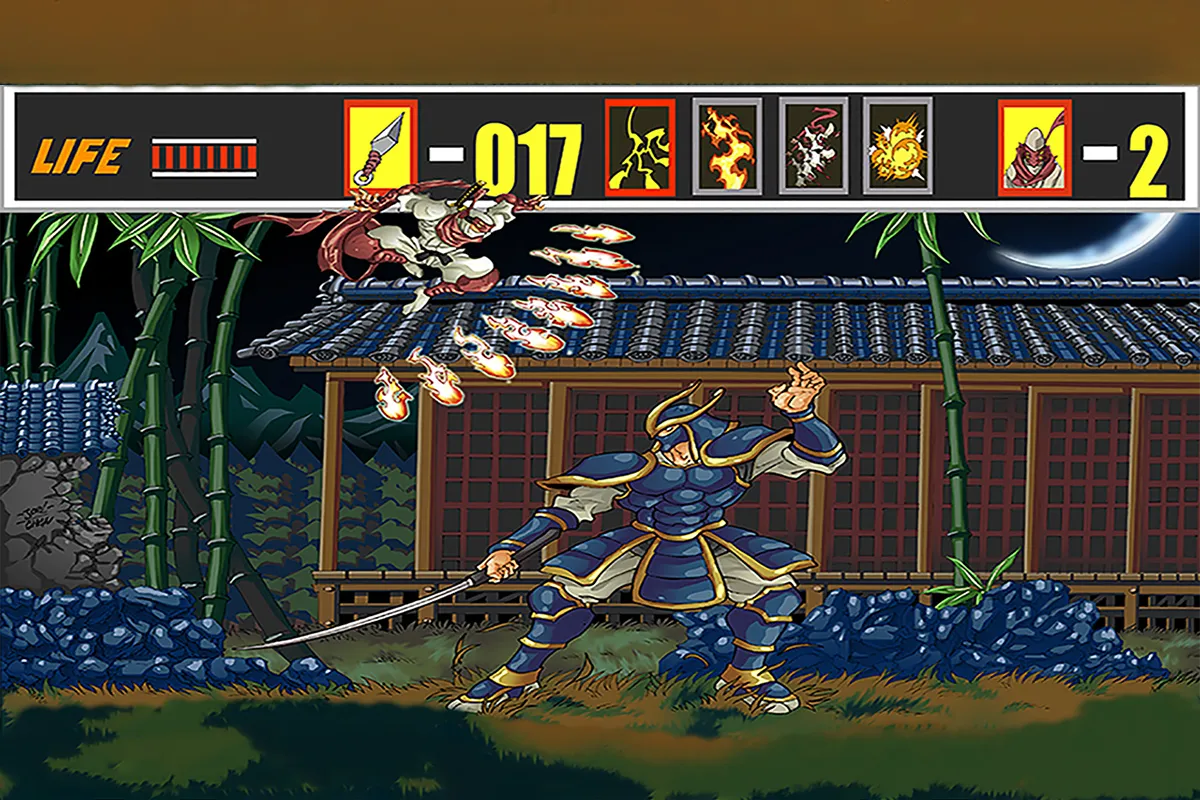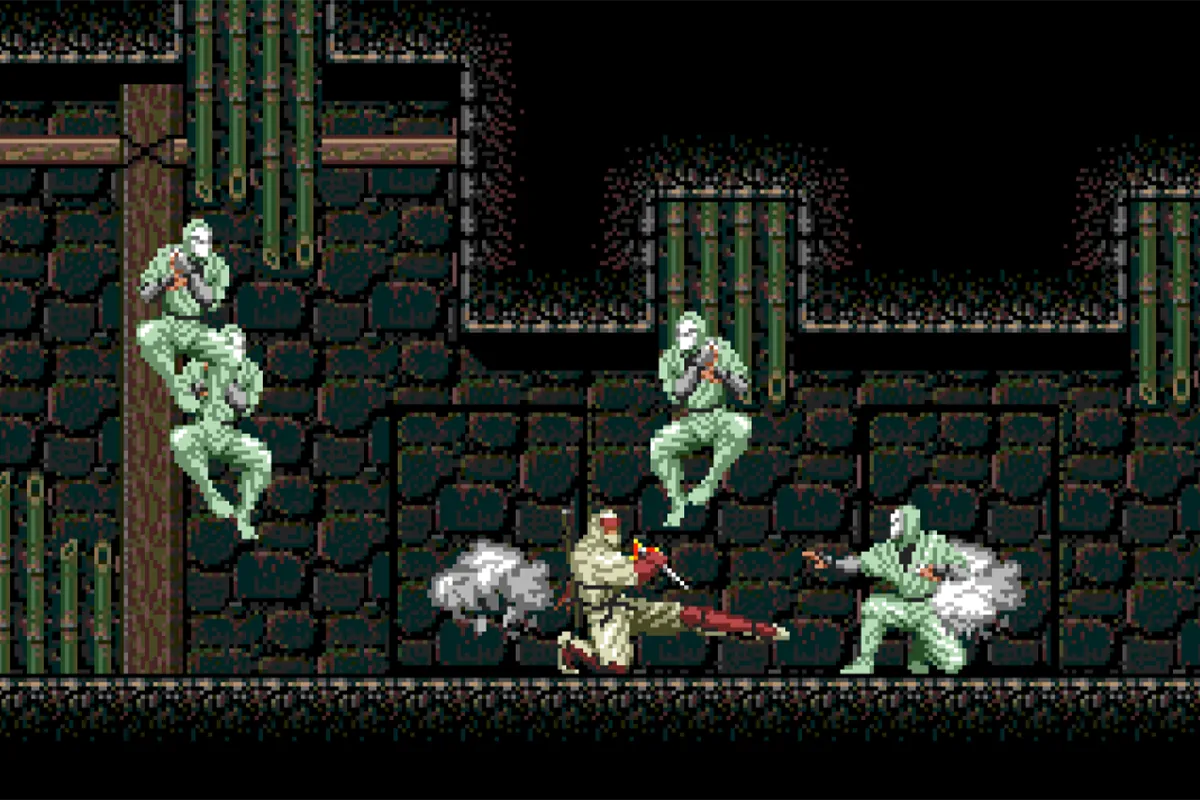
From Pixels to Legends: The Journey of The Revenge of Shinobi
Are you ready to dive into the pixelated world of classic gaming? Today, we’re exploring The Revenge of Shinobi game, a title that has left an indelible mark on the history of video games since its release in 1989. Originally launched on the Sega Genesis, this side-scrolling action platformer quickly became a fan favorite, celebrated for its engaging gameplay and iconic ninja protagonist, Joe Musashi.
As players navigate through beautifully crafted levels filled with enemies and challenging bosses, they also experience a rich narrative that combines revenge and heroism. The game not only set the stage for future ninja-themed titles but also showcased the capabilities of the Sega Genesis, pushing the boundaries of graphics and sound for its time. Join us as we unravel the elements that make The Revenge of Shinobi a timeless classic worth revisiting! Get ready to explore this nostalgic game through this RetroBuzzi blog post

Story
In The Revenge of Shinobi game, we follow the gripping tale of Joe Musashi, a master ninja whose life is shattered when the notorious crime syndicate, Neo Zeed, re-emerges. Three years after the events of the original Shinobi, Neo Zeed seeks revenge against Musashi and his clan by assassinating his master and kidnapping his fiancée, Naoko. This brutal act sets Joe on a relentless quest for vengeance, as he travels across various locales to confront the evil organization and rescue Naoko.
Key themes in the game include revenge, honor, and the struggle against overwhelming odds. Musashi’s motivations are deeply rooted in loyalty to his fallen master and love for Naoko, driving him to face formidable enemies and navigate treacherous environments. As players guide Joe through this perilous journey, they experience not just action-packed gameplay but also a narrative that resonates with timeless values of courage and sacrifice
Characters
At the heart of The Revenge of Shinobi game is Joe Musashi, a legendary ninja whose journey is driven by vengeance and love. Musashi is portrayed as a skilled warrior, trained in the ancient arts of ninjutsu. His character embodies resilience and honor, making him an iconic figure in the gaming world. As players control Joe, they experience his transformation from a peaceful ninja to a relentless avenger after the brutal assassination of his master and the kidnapping of his fiancée, Naoko.
Supporting Joe are various characters that enrich the narrative. Naoko, his beloved, serves as the primary motivation for his quest. On the opposing side, the antagonists include members of the Neo Zeed organization, a ruthless crime syndicate bent on domination. Notable enemies include “Hercules,” a nod to pop culture icons like The Terminator, and other formidable foes that challenge Musashi’s skills throughout his perilous journey. Each character adds depth to the story, enhancing the overall experience of this classic game.

Gameplay Mechanics
The Revenge of Shinobi game offers a thrilling experience that combines fast-paced action with strategic gameplay. At its core, players control Joe Musashi as he traverses through beautifully designed levels filled with enemies, obstacles, and hidden secrets. The game features a classic side-scrolling format, where players must navigate left to right, overcoming various challenges and defeating foes along the way.
Combat is a key element of the gameplay, allowing players to utilize a variety of moves. Joe can perform swift attacks using his shurikens (ninja stars) or engage in close combat with punches and kicks. What sets this game apart is the ability to execute special techniques, known as “Ninjutsu.” These powerful moves can be unleashed once players collect enough power-ups scattered throughout the levels. For instance, Musashi can summon lightning or create clones of himself to confuse enemies, adding an exciting layer of strategy to battles.
The level structure is diverse and engaging, featuring different environments such as urban landscapes, forests, and enemy strongholds. Each level culminates in a challenging boss fight that tests players’ skills and reflexes. The game encourages exploration, rewarding those who seek out hidden items and secret paths. With its combination of fluid combat mechanics, unique power-ups, and varied level design, The Revenge of Shinobi remains a standout title that captivates both new players and nostalgic fans alike.
Controls
In The Revenge of Shinobi game, the control scheme is designed to be intuitive, allowing players to easily navigate Joe Musashi through his perilous journey. The Sega Genesis controller features a simple layout: the D-pad is used for movement, while the action buttons are assigned to attacks, jumps, and special moves. This straightforward configuration enables players to quickly grasp the mechanics without a steep learning curve.
Responsiveness is one of the game’s standout features. Players will find that Joe’s movements feel fluid and precise, making it easy to execute combos and dodge enemy attacks. The controls allow for quick reactions, which is crucial during intense combat sequences and platforming challenges.
Moreover, the ability to seamlessly switch between different attacks and Ninjutsu techniques adds depth to gameplay without overwhelming players. Overall, the controls in The Revenge of Shinobi strike a perfect balance between accessibility and depth, ensuring an engaging experience for both newcomers and seasoned gamers alike.
Graphics
The Revenge of Shinobi game showcases a striking visual style that was groundbreaking for its time. The art direction combines vibrant colors with detailed pixel art, creating immersive environments that capture the essence of a ninja’s world. Each level is uniquely designed, from the bustling streets of urban Japan to serene forests and treacherous enemy hideouts. The attention to detail in character animations and backgrounds enhances the overall aesthetic, making the game visually appealing even decades after its release.
When compared to other games from the late 1980s, such as Ninja Gaiden and Castlevania, The Revenge of Shinobi stands out due to its fluid animations and dynamic backgrounds. While many titles of this era relied on static visuals, Shinobi’s parallax scrolling effects create a sense of depth that immerses players in the action. Additionally, the character designs are memorable, with Joe Musashi and his enemies exhibiting distinct styles that reflect their personalities and roles within the story.
Overall, the graphics in The Revenge of Shinobi not only showcase the technical capabilities of the Sega Genesis but also contribute significantly to its enduring charm and appeal in the retro gaming community.

Sound
The sound design in The Revenge of Shinobi game plays a crucial role in enhancing the overall gaming experience. The soundtrack, composed by Yuzo Koshiro, is a standout feature that perfectly complements the action-packed gameplay. With its blend of catchy melodies and atmospheric tunes, the music dynamically shifts to match the intensity of each level, immersing players into Joe Musashi’s world. The iconic themes have become memorable, often evoking nostalgia among fans of retro gaming.
In addition to the music, the sound effects are equally impressive. From the satisfying clang of shurikens hitting enemies to the distinct sounds of Joe’s attacks and jumps, each effect adds a layer of immersion. The audio cues help players anticipate enemy movements and actions, enhancing gameplay strategy.
Overall, the combination of an engaging soundtrack and impactful sound effects elevates The Revenge of Shinobi beyond mere visuals, creating a rich sensory experience that resonates with players long after they’ve put down the controller. This attention to audio detail contributes significantly to the game’s lasting legacy in the world of classic video games.
Difficulty
The Revenge of Shinobi game presents a balanced challenge that keeps players engaged without feeling overwhelming. The difficulty curve is well-designed, allowing newcomers to gradually acclimate to the gameplay mechanics while still providing seasoned players with a satisfying level of challenge. Early levels serve as an introduction to Joe Musashi’s abilities, enabling players to master basic controls and combat techniques before facing tougher foes and intricate platforming challenges.
As players progress, they encounter increasingly difficult enemies and complex level designs that require quick reflexes and strategic thinking. Boss battles, in particular, test players’ skills and understanding of the game mechanics, often necessitating multiple attempts to succeed. This aspect of difficulty fosters a sense of accomplishment when players finally conquer a challenging section or defeat a formidable boss.
Overall, the game’s difficulty enhances player engagement by encouraging perseverance and mastery. The rewarding feeling of overcoming obstacles keeps players coming back for more, solidifying The Revenge of Shinobi as a classic that continues to captivate audiences today.
Last Words
In summary, The Revenge of Shinobi game is a remarkable blend of engaging gameplay, captivating story, and stunning visuals that have solidified its place in video game history. From the compelling narrative of Joe Musashi’s quest for vengeance to the fluid combat mechanics and memorable soundtrack, every aspect contributes to an unforgettable gaming experience. The game’s well-balanced difficulty keeps players invested, encouraging them to hone their skills and explore the intricacies of each level.
As we reflect on its legacy, The Revenge of Shinobi stands out not only as a classic title for the Sega Genesis but also as a significant influence on the action-platformer genre. Its innovative design and rich storytelling have inspired countless games that followed, making it a timeless treasure for both retro gaming enthusiasts and new players alike. Whether you’re revisiting this classic or experiencing it for the first time, The Revenge of Shinobi remains a testament to the enduring appeal of video games and the artistry behind them.

